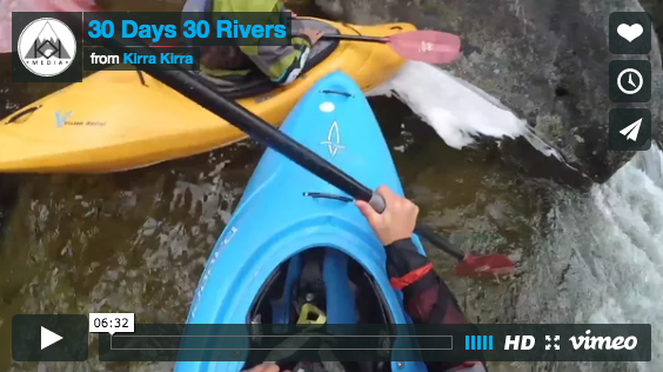By Gerrit Egnew
Microplastics Adventure Scientist
George and I looked upstream at Skyscraper, a rapid halfway down South Silver Creek, in the mountains near Placerville, CA. Beneath us was an undercut cave; we had been there for a while, scouting and fretting and rationalizing. Kirra scrambled down to us and asked if we planned to run it. I looked at George: “I sure wish someone would come down from behind us and, like, run it. Or set safety. So that we know it’s okay.”
Ten minutes later, as we walked back to our boats, a group of six Kiwis materialized from the white roar. “Want to set safety with us on the Teacups?” one asked. Providence.
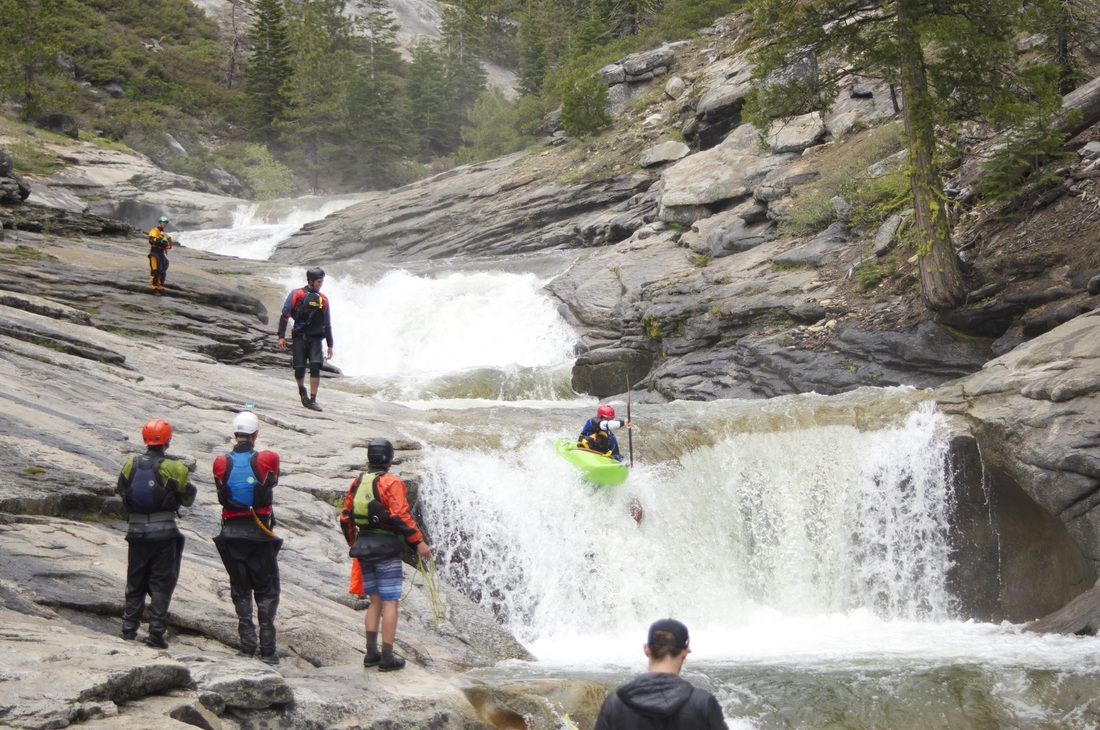
The teacups of South Silver Creek, CA. Photo: Kirra Paulus
We ran it. It was beautiful, terrifying, perfect. At the end, stripping off our wet gear, elated, we discovered myriad connections: Two of them had worked in Banks, ID, near where I live. Another had guided on the Middle Fork, where I guide. We shared many friends and although we were from different parts of the world, and neither they nor us had been to California, our camaraderie was instant.
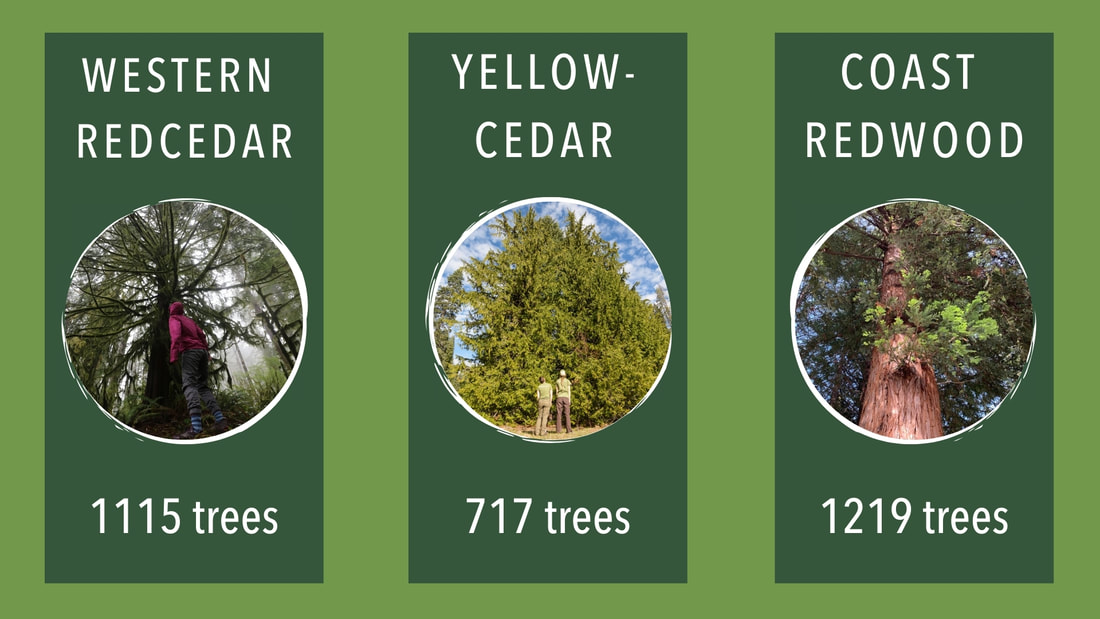
Gerrit Egnew in skyscraper rapid on South Silver Creek, CA. Photo: Kirra Paulus
The river community is small, but it is tightly knit. If you meet a kayaker anywhere in the world, it’s likely you have a mutual friend. At the end of our California trip, I was driving over the Yuba Gap (CA) on my way back to the Middle Fork. I passed a van with kayaks on top and waved. Later, after fueling up, I passed it again near Winnemucca, NV. That evening I pulled into the Canyons warehouse (ID); as I caught up with the team, that same van pulled into the parking lot. Out jumped Chris and Britt, two of our guides.
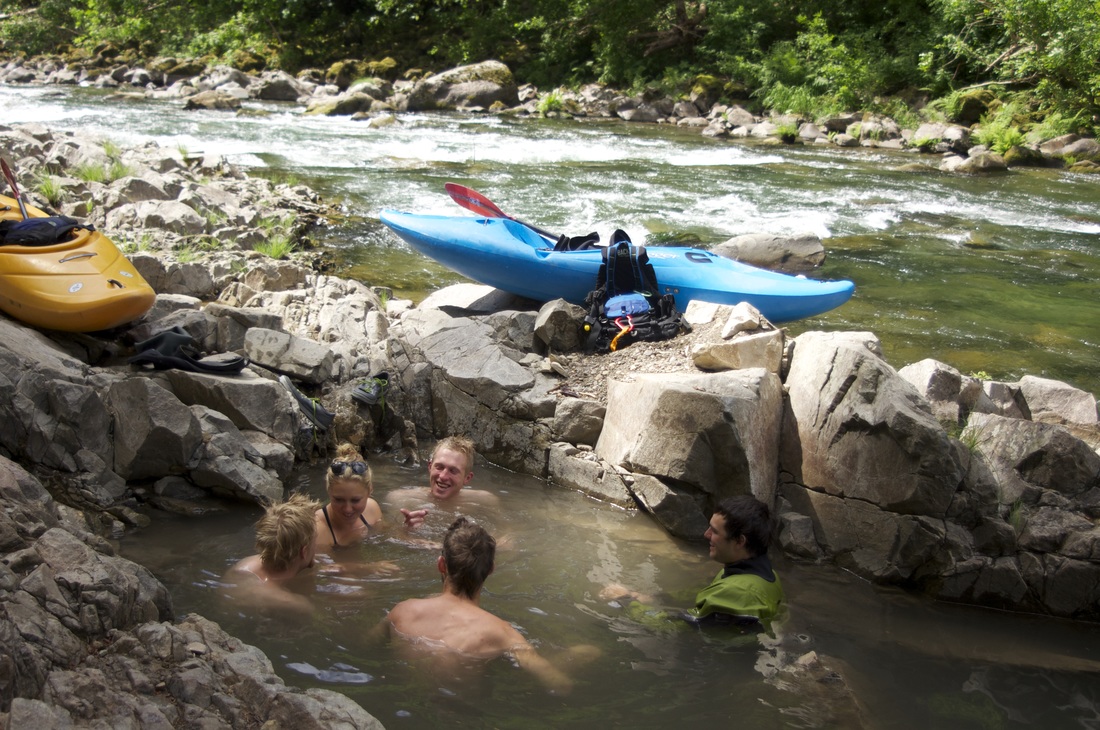
Natural hot-springs midway down the Wind River, WA. Photo: Kirra Paulus
Unfortunately, this close community is sometimes insular. (When your activity is the coolest ever, what else matters?) But there is such vivid, exultant energy in the kayaking community; how can it be directed to tangible issues? Kayakers are driven to explore, travel and experience new rivers, but what do we do to help conserve them?
Adventure Scientists has a compelling solution. Gregg Treinish, founder of Adventure Scientists, realized that scientific research requires travel in extreme or inaccessible environments and training researchers to manage these situations safely is time-consuming and expensive. But there is already a group of people in these environments: outdoor sports enthusiasts. Particularly, kayakers travel worldwide to remote creeks and rivers. Adventure Scientists’ Microplastics project organizes kayakers and other adventurers to take water samples wherever they may be in the world. Researchers can get much more data by partnering with people who already have the skills and motivation to get into the places being studied.
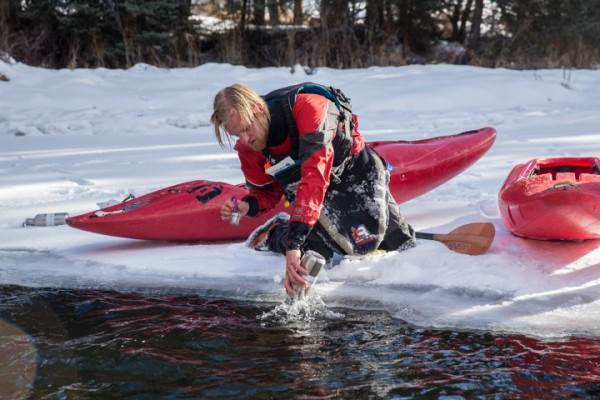
Gerrit Egnew sampling midwinter on the Gallatin River, MT. Photo: Louise Johns
Kirra and I stumbled by chance into the
Gallatin Microplastics Initiative. A friend sent me a link and we signed up for it because it sounded neat and fit our skill set. But as we learned more and took samples, the importance of the issue grew on us. Our interests, as they exist now, can be useful for research that seeks to understand the resource we depend on.
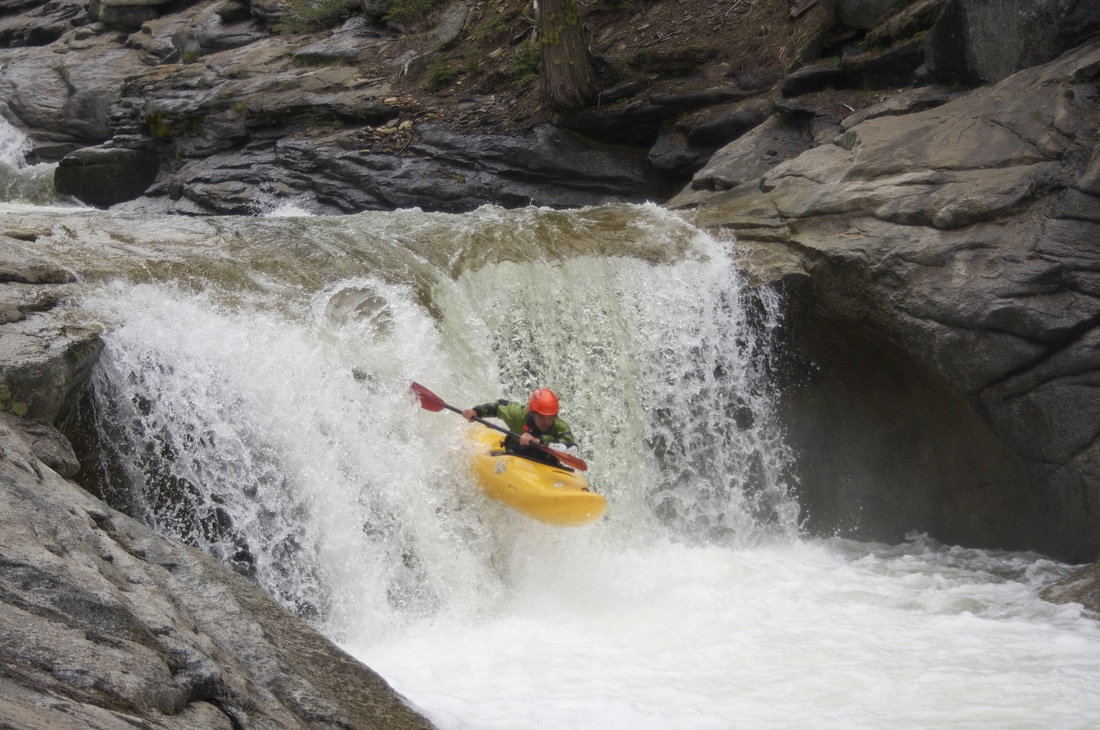
George Milheim on the lower teacups of South Silver Creek, CA. Photo: Kirra Paulus
Kirra graduated in the spring, and I’m taking time off. We both river guide and had been planning a trip in May before rafting season started. Influenced by Adventure Scientists, that trip suddenly seemed like an opportunity to gather data for the Global Microplastics Initiative. We had a month. Well, we had to take finals in the first week of May. So, a month minus five days of caffeinated stress. That’s kind of like thirty days. (Although May has thirty-one; I haven’t taken calculus in a year.)
First, right before finals, we jetted to the Lochsa Rendezvous. Then after our last exam, Kirra and I got on the road. Over the next few weeks, in a haze of exhaustion, river noise, shuttle complications, and Cold Snacks, we kayaked and sampled the following rivers:
• Lochsa River, ID
• Fish Creek, ID
• Clark Fork River, MT
• Fish Creek, MT
• Kootenai Creek, MT
• South Fork Clearwater River, ID
• North Fork Payette River, ID
• Lake Fork Creek, ID
• South Fork Payette River, ID
• Main Payette River, ID
• South Fork Salmon River, ID
• Main Salmon River, ID
• Selway River, ID
• Bear Creek, ID
• White Salmon River, WA
• Hood River, OR
• Wind River, WA
• Little White Salmon River, WA
• Klamath River, CA
• California Salmon River, CA
• South Silver Creek, CA
• Stanislaus River, CA
• Tuolumne River, CA
• Merced River, CA
• South Fork American River, CA
• Swan River, MT
• Gallatin River, MT
|
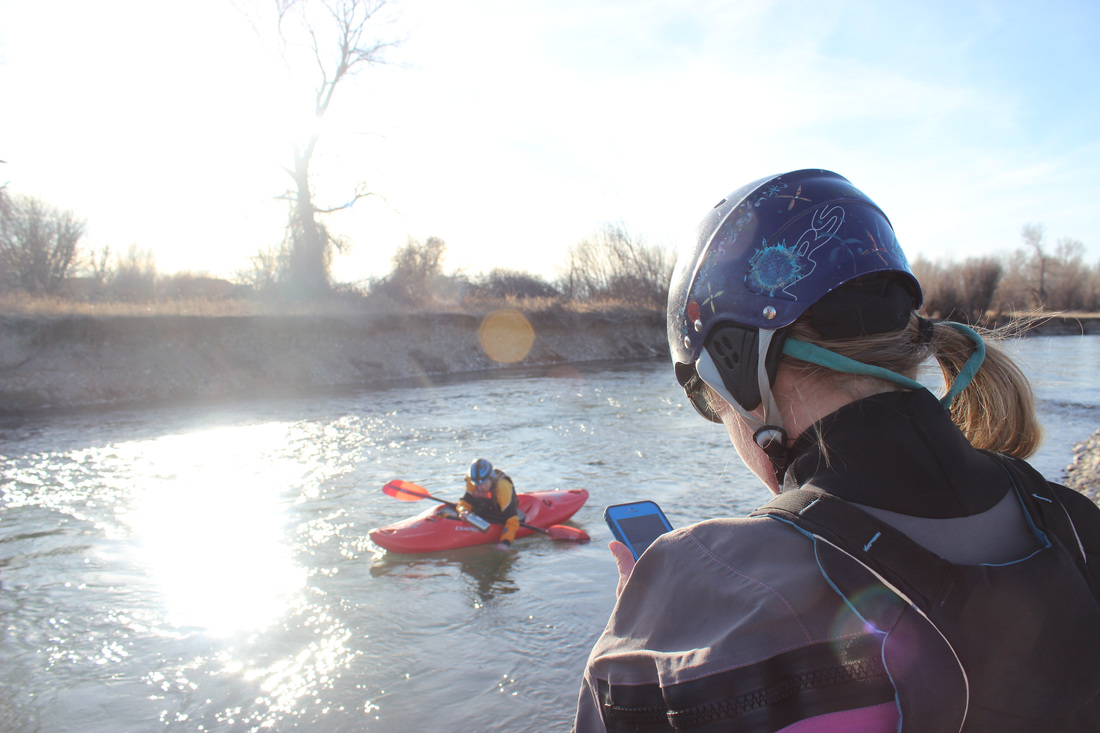
Emma Bode entering data for a sample on the Gallatin River, MT. Photo: Kirra Paulus

Jessie Bohn taking the temperature on the Gallatin River, MT. Photo: Kirra Paulus
|

Relaxing on the banks of the Selway River, ID. Photo: Kirra Paulus
Joining us for various sections were George Milheim, Kathryn Egnew, Bridger Dunnagan, Mark Rockwell, Spencer Lawley and Jessie Bohn. The trip was less about paddling stouts (although we scared ourselves more than once) and more about going to new places. We wanted to expand our experience of the river world and add to its scientific knowledge base. Adventure and science need not be mutually exclusive. Small groups of citizen scientists, operating in areas they know well, can do powerful work for environmental science. We’ve become activate and engaged in our community on a new level. You can too.

